Smartphones & Tablets | December 26, 2023
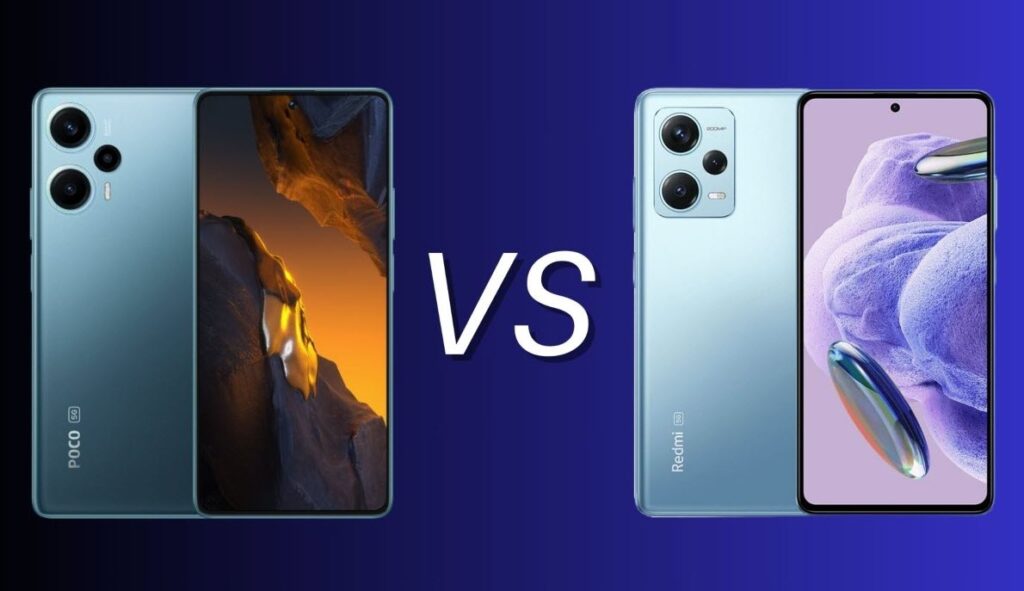
| Poco F5 | Xiaomi Redmi Note 12 Pro Plus | |
| Screen | 6.67 inches of AMOLED technology, FullHD+ resolution of 2,400 x 1,080 pixels, 120 Hz refresh rate, 240 Hz touch sampling rate, 1,000 nits maximum brightness, HDR10+, Dolby Vision and Corning Gorilla Glass 5 | 6.67 inches of AMOLED technology, 20:9 format, FullHD+ resolution of 2,400 x 1,080 pixels, 120 Hz refresh rate, 240 Hz touch sampling rate, 900 nits maximum brightness, Dolby Vision, HDR10+ and Corning Gorilla glass Glass 5 |
| Main camera | – 64 megapixel main sensor with f/1.8 focal aperture and support for 4K video recording at 30 frames per second – Secondary sensor with 8 megapixel wide-angle lens with f/2.2 focal aperture – Tertiary sensor with 2 megapixel macro lens with f/2.4 focal aperture | – 200 megapixel main sensor with f/1.7 focal aperture with 4K video recording capacity at 30 frames per second – Secondary sensor with 8 megapixel wide-angle lens with f/2.2 focal aperture – Tertiary sensor with 2 megapixel macro lens with f/2.4 focal aperture |
| Selfie camera | 16 megapixel main sensor with f/2.5 focal aperture with support for FullHD 1080p video recording at 60 frames per second | 16 megapixel main sensor with f/2.5 focal aperture with video recording capacity in FullHD 1080p resolution at 60 frames per second |
| Internal memory | 256 GB UFS 3.1 type | 256 GB UFS 2.2 type |
| Extension | Not expandable | Not expandable |
| Processor and RAM memory | – Qualcomm Snapdragon 7+ Gen 2 4 nanometers and eight cores at 2.91 GHz max. – 8 or 12 GB of LPDDR5 RAM | – Mediatek Dimensity 1080 6 nanometers and eight cores at 2.6 GHz max. – 8 GB of LPDDR4 RAM |
| Battery | 5,000 mAh with 67W fast charging (charger included in the box) | 5,000 mAh with support for 120W fast wired charging (charger included in the box) |
| OS | Android 13 under MIUI 14 for POCO | Android 13 under MIUI 14 |
| Connections | 5G, 4G LTE, dual-band WiFi 802.11 a/b/g/n/ac/6, Bluetooth 5.3, GPS with A-GPS and GLONASS, NFC for contactless mobile payments, 3.5 mm jack input for headphones and USB type C | 5G, 4G LTE, dual-band WiFi 802.11 a/b/g/n/ac/6, Bluetooth 5.2, GPS with A-GPS and GLONASS, NFC for contactless payments, 3.5 mm jack input for headphones and USB type C |
| SIM | Dual nano SIM | Dual nano SIM |
| Design | Colors: black, white and blue | Colors: black, white and blue |
| Dimensions and weight | 161.1 x 75 x 7.9 millimeters and 181 grams | 162.9 x 76 x 9 millimeters and 210 grams |
| Featured Features | Side-mounted fingerprint sensor, facial recognition, stereo speakers with Dolby Atmos, internal cooling, infrared sensor for controlling home devices, and IP53 grade water resistance certification (splash-proof) | Side-mounted optical fingerprint sensor, facial recognition, stereo speakers with Dolby Atmos, internal cooling, infrared sensor for controlling home devices, and IP53 water and dust resistance (splash-proof) |
| Release date | Available | Available |
| Price | From 360 euros | From 340 euros |
The Poco F5 and Redmi Note 12 Pro Plus are among the best mid-range phones of the moment, without a doubt. Both stand out for offering a fairly competitive and similar value for money. They share several features, as well as some important differences, both in terms of performance and design. To see which one is better and why, let’s compare the Poco F5 vs Redmi Note 12 Pro Plus. Here, we will go through everything both phones have to offer. Which one will win? Let’s find out.
The prices mentioned in the article may vary over time, so, we limit ourselves to analyzing the differences as of the publication date.
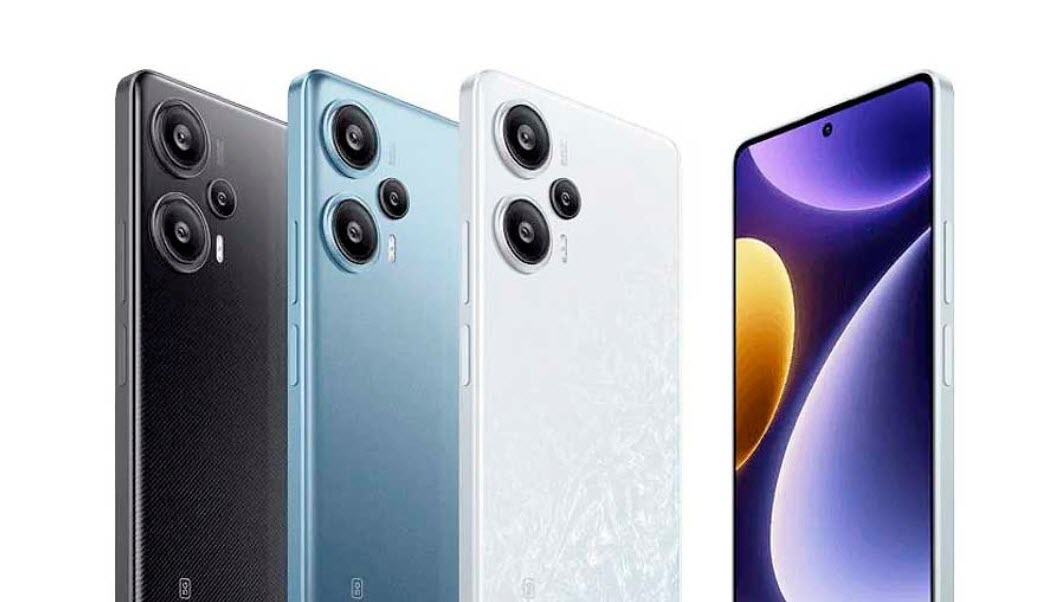
The Poco F5 and Redmi Note 12 Pro Plus are very similar to each other, thanks to their shared design approach. Both feature a triple camera with two sensors aligned vertically alongside a third one diagonally placed, as can be seen in the images. However, those of the Redmi Note 12 Pro Plus are contained in a rectangular module that protrudes from its back, while the Poco F5’s cameras are housed directly on the rear panel thanks to the “floating camera” concept.
Both also have similar sizes, but the Xiaomi Redmi Note 12 Pro Plus is slightly larger and thicker. Not only that, but it’s also almost 30 grams heavier than the Poco F5.
Regarding the construction materials and finish of both, we can say that they are made entirely of plastic, providing a very similar feel in hand, except for the edges. While the Poco F5 has edges with a slight curvature, those of the Redmi Note 12 Pro Plus are straight.
Taking a look at the display section, we won’t find many differences between the Poco F5 vs Redmi Note 12 Pro Plus. There is only one, and it has to do with brightness. While the Poco F5’s display reaches a maximum brightness of 1,000 nits, that of the Xiaomi Redmi Note 12 Pro Plus falls just behind with its 900 nits. Otherwise, both screens measure 6.67 inches and have a FullHD+ resolution of 2400 x 1080 pixels, a 120 Hz refresh rate, a 240 Hz touch sampling rate, and compatibility with HDR10+ and Dolby Vision standards. They are also coated with Corning Gorilla Glass 5 for durability.
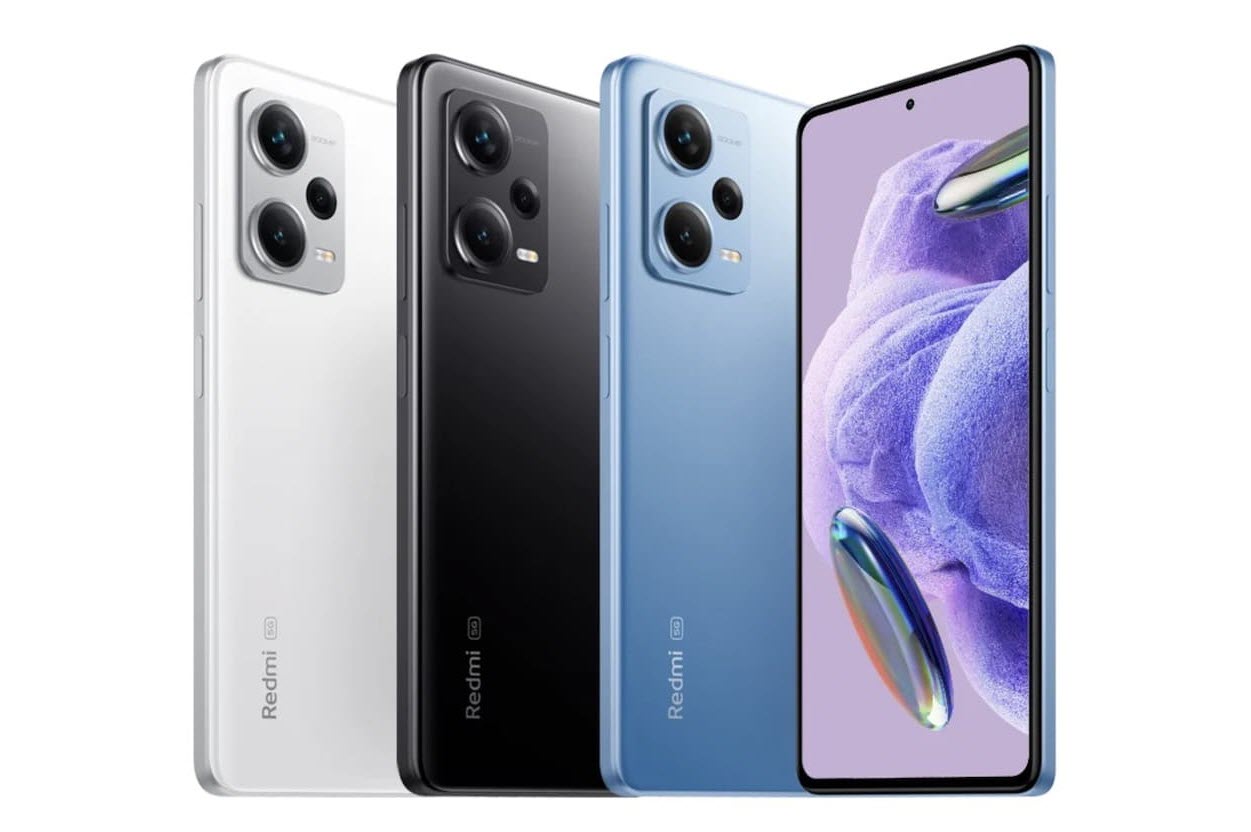
The power of the Poco F5 far surpasses that of the Xiaomi Redmi Note 12 Pro Plus. And it’s not surprising. The processor in the Poco phone is much more advanced than that of Xiaomi. We’re talking about the 4-nanometer Snapdragon 7+ Gen 2, Qualcomm’s chipset that offers the best performance for the current premium mid-range. Its eight cores at 2.91 GHz maximum clock frequency make it capable of running all kinds of apps and games with the highest possible smoothness.
The one inside the Redmi Note 12 Pro Plus is the Dimensity 1080 from Mediatek, a chipset that also delivers quite good performance but is inferior to the aforementioned Snapdragon 7+ Gen 2 of the Poco F5 in terms of performance and power. It has a 6-nanometer node size and eight cores that work at a maximum clock frequency of 2.6 GHz. In benchmark performance tests such as AnTuTu and Geekbench, it achieves decent results but not as high as those of the Qualcomm chipset.
The Poco F5 also has better performance due to the type of RAM and internal memory it possesses. Specifically, it has LPDDR5 RAM, unlike the Redmi Note 12 Pro Plus, which has LPDDR4. The internal memory it has is UFS 3.1, while the latter’s is UFS 2.2.
That being said, both have an internal storage space of 256 GB that cannot be expanded via a microSD card. They also come with 8 GB of RAM, but only the Poco F5 is also available in a variant with 12 GB.
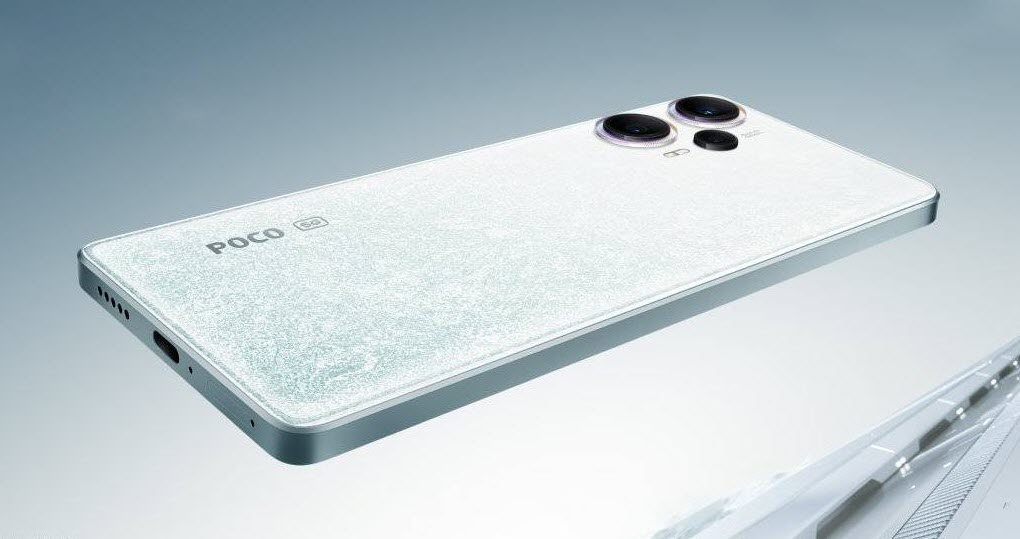
Skipping the cameras of both phones is not something we’ll do in this comparison of the Redmi Note 12 Pro Plus vs Poco F5, so let’s go through their features, although we must mention that the differences are not many, as they share the same photographic sensors, except for the main one, which is 200 megapixels in the Redmi Note 12 Pro Plus and 64 megapixels in the Poco F5. Here, Xiaomi’s phone regains some advantage, but not in terms of video recording, as both sensors can record in 4K at 30 frames per second with Optical Image Stabilization (OIS) with similar results.
The other sensors on both mid-range phones are an 8-megapixel wide-angle with an aperture of f/2.2 and a 2-megapixel macro with an aperture of f/2.4. The front camera is also the same in both cases. It’s a 16-megapixel camera with an aperture of f/2.5. Additionally, it can record in FullHD 1080p resolution at a rate of 60 frames per second.
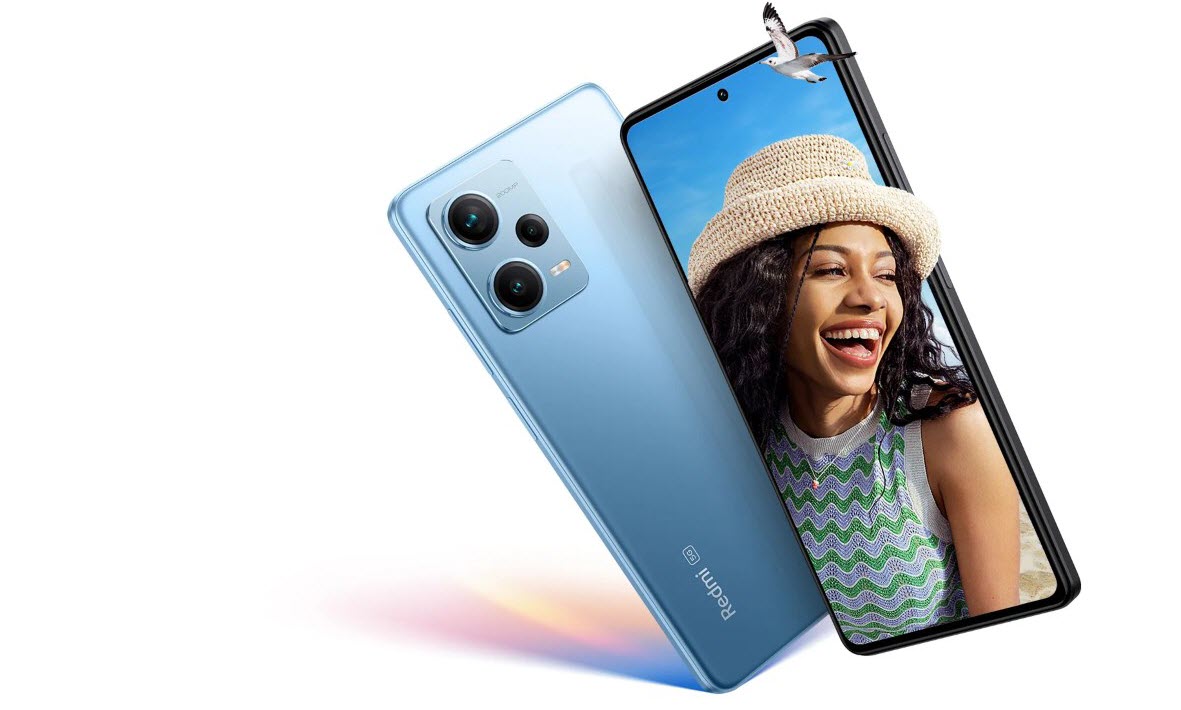
We continue to find more differences between the Poco F5 vs Redmi Note 12 Pro Plus. In the battery section, we have one more difference, but it’s not related to the size and autonomy as both have a 5,000 mAh battery. It’s related to fast charging. While the Poco F5 boasts a 67 W fast-charging cable, the Xiaomi Redmi Note 12 Pro Plus comes with a battery that supports 120 W fast charging. This means that the F5 takes about 46 minutes to get a full charge, more than twice what the Redmi Note 12 Pro Plus takes, which achieves it in about 19 minutes. Fortunately, both phones include their original chargers in the box.
Both phones share the same connectivity options, except for the Bluetooth version, which is v5.3 in the Poco F5 and v5.2 in the Redmi Note 12 Pro Plus. Otherwise, both come with 5G, 4G LTE, dual SIM, Wi-Fi 6, GPS with A-GPS and Glonass, NFC, and a USB Type-C port. They also have a 3.5mm headphone jack and an infrared sensor that allows them to act as a remote control for home devices such as TVs and air conditioners.
As for other features, both have a side fingerprint reader and facial recognition. They also feature stereo speakers with Dolby Atmos and an internal cooling system to prevent overheating. Additionally, they come with IP53 water and dust resistance (splash-proof).
Currently, both run on Android 13 as the operating system under MIUI 14. However, only the Poco F5 was launched with this software. The Redmi Note 12 Pro Plus came with Android 12. And, since both were presented with the promise of having